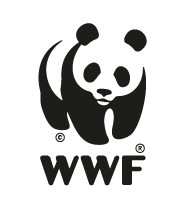To improve coral coverage and coral diversity, WWF is collaborating with the Coral Academy, The Chinese University of Hong Kong, on two coral restoration approaches, sexual and asexual propagation, to maximise the coral restoration efforts.
A research team from the Coral Academy collects egg bundles from corals during their spawning period. The egg-sperm bundles are then taken to the Simon F.S. Li Marine Science Laboratory (MSL), CUHK and allowed to fertilise and develop into larvae. The research team provides suitable substrates on which the coral larvae can settle and grow. These “coral babies” are then cultured in nursery tanks at the MSL and the Hoi Ha Marine Life Centre (HHMLC) for at least two or three years. Healthy coral juveniles are then transplanted into restoration sites in the Tolo Harbour and Channel. The Coral Academy research team regularly monitors the health of the transplanted coral juveniles. This technique allows us to increase the successful genetic diversity and the adaptation of climate change.
Corals of Opportunity (COPs) are detached living coral fragments that have broken off from a larger colony and have a low chance of surviving in the wild. A team made up of divers from the Coral Academy and WWF collect COPs and bring them to the MSL, CUHK and HHMLC. The Coral Academy research team carries out a series of processes, including cutting and anchoring the collected COPs onto locally-made, stable substrates. These coral fragments are then carefully nurtured in the nursery tanks at the MSL and HHMLC. Once the recovered fragments are healthy and have reached a suitable size, they are transplanted into restoration sites located in the Tolo Harbour and Channel. The Coral Academy research team regularly monitors the health of the transplanted fragments.
